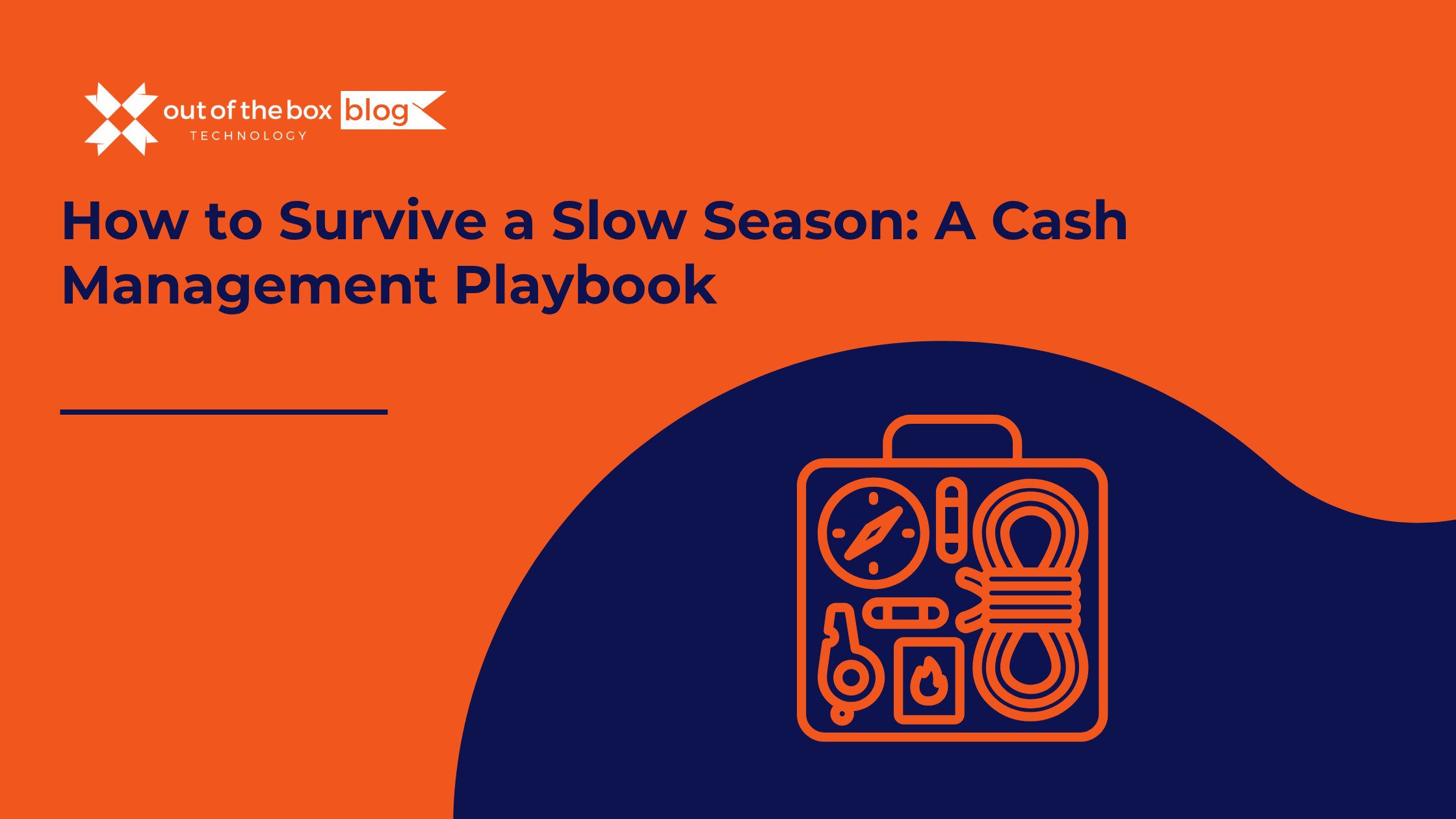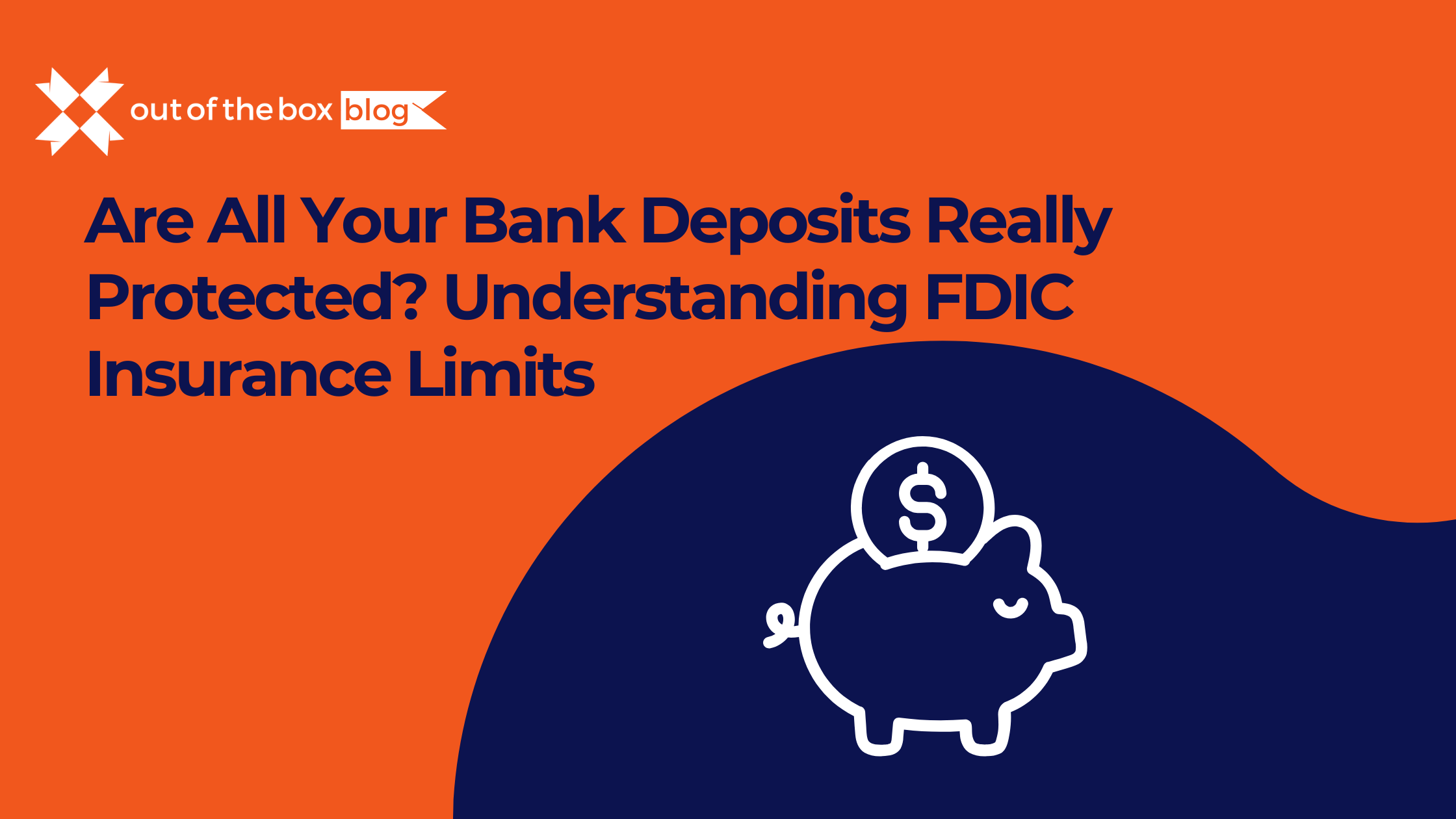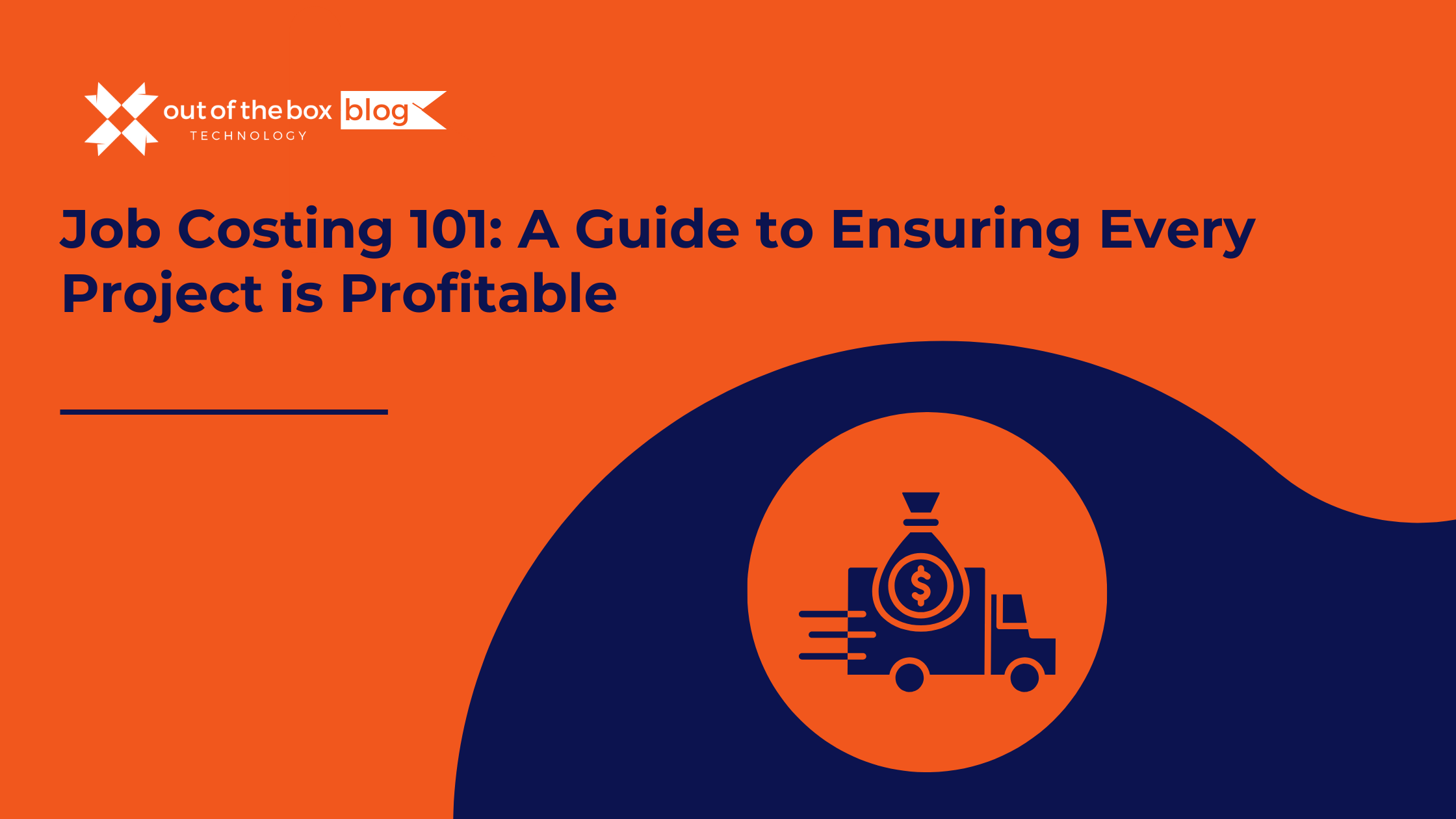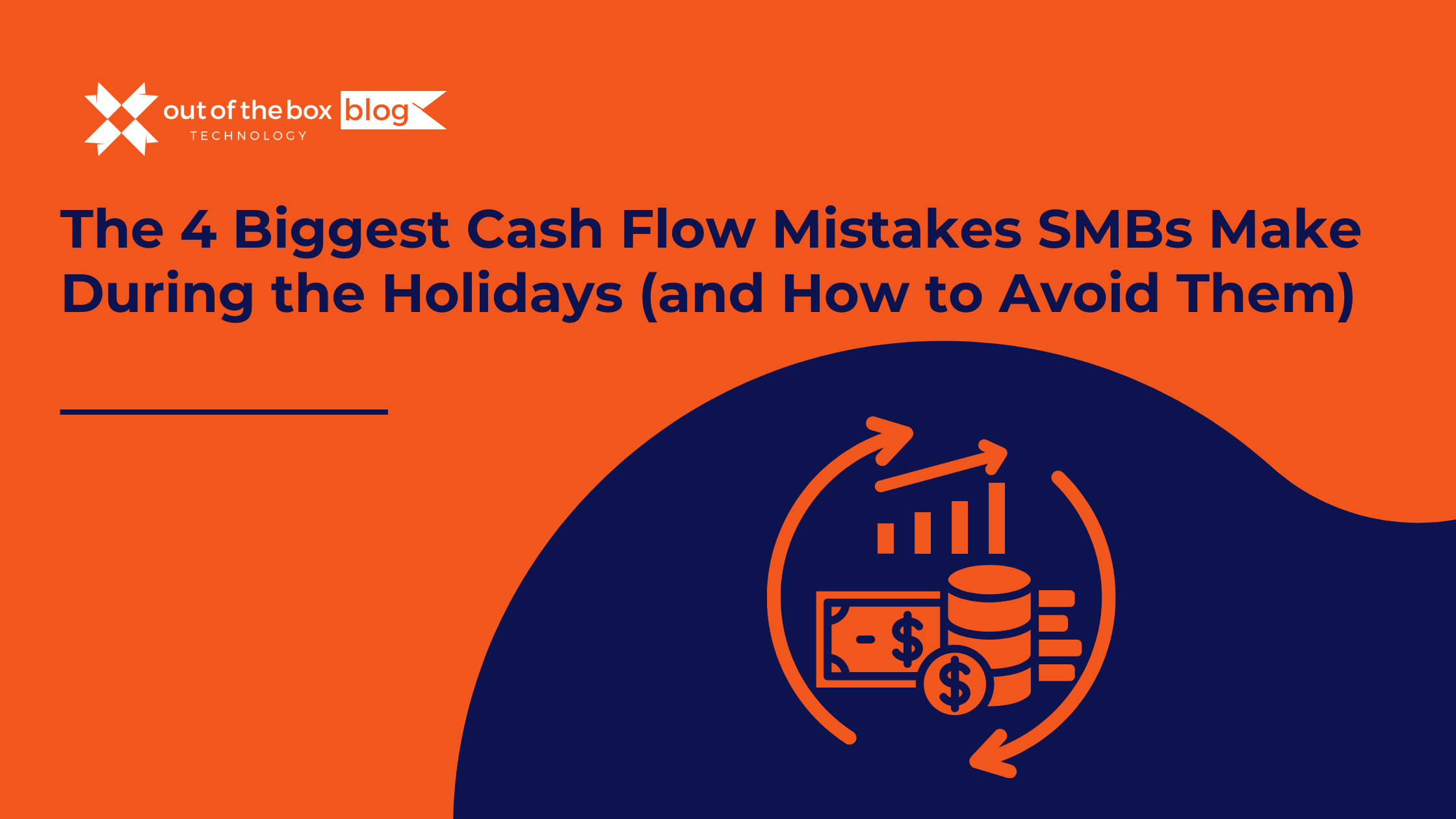For many business owners, the calendar is a source of both excitement and anxiety. There’s the thrill of the busy season—the phone ringing off the hook, orders pouring in, and cash flowing freely. But then there’s the quiet dread of the off-season. The landscaper watching the first snowflakes fall, the coastal retailer seeing the summer tourists drive away, the tax accountant after April 15th.
This seasonal slowdown is a predictable reality for countless businesses. Yet, for many, it triggers a cycle of panic. Operations are slashed, stress levels skyrocket, and tough decisions are made out of desperation rather than strategy. It feels like a recurring storm you have to weather, hoping you make it to the other side intact.
But what if you could change the narrative? What if the slow season wasn’t a threat to be survived, but a strategic period to be managed?
The key is treating seasonality not as an emergency, but as a predictable business cycle that demands a specific financial strategy. A staggering 82% of business failures are due to poor cash management, a problem that is massively amplified when revenue dips. This isn’t just about cutting costs; it’s about proactive planning, disciplined execution, and strategic foresight.
Welcome to your Cash Management Playbook. This is your step-by-step guide to transforming your slow season from a period of financial stress into a time of strategic advantage. We’ll cover the plays you need to run before, during, and after the slowdown to ensure your business not only survives but emerges stronger, smarter, and more resilient than ever.
Part 1: The Pre-Season Prep (The 90 Days Before the Slowdown)
The battle against the slow season is won long before the first quiet day arrives. The work you do during your peak season determines your fate in the off-season. Here are the six essential plays to run in the 90 days leading up to your anticipated slowdown.
Play 1: Build Your “Winter War Chest” (Cash Reserve)
Your single most important asset during a slow season is cash. A robust cash reserve is the buffer that allows you to cover essential expenses and make strategic decisions without succumbing to panic.
- The Goal: Aim to have 3-6 months of your lean operating expenses set aside in a separate, dedicated business savings account. “Lean” expenses are the absolute bare-bones costs required to keep the lights on—rent, essential utilities, key salaries, insurance, and critical software subscriptions.
- The Strategy: During your busy season, be relentless about funding this reserve.
- Automate It: Set up an automatic transfer to your savings account for every single business day or week.
- “Profit First” Mentality: Treat your cash reserve contribution like a non-negotiable expense. Pay your reserve account first, before any other discretionary spending.
- Windfall Allocation: Did you have a surprisingly good sales week? Resist the urge to spend it. Allocate at least 50% of any unexpected revenue directly to your war chest.
Example: Green Scapes Landscaping knows their revenue drops by 80% from December to February. Their lean monthly operating expense is $10,000. Their goal is to have a $30,000 reserve by November 30th. Starting in their busy season in May, they automatically transfer $150 every business day into their “Winter War Chest” account, ensuring they hit their goal with time to spare.
Play 2: Master Your Cash Flow Forecast
A cash reserve without a forecast is like a full gas tank without a map. You need to know exactly how far your cash will take you. A detailed cash flow forecast is your most critical planning tool.
- The Goal: Create a week-by-week cash flow forecast for at least six months, covering the period before, during, and after your slow season.
- The Strategy: Use a tool like QuickBooks Online’s cash flow planner or a detailed spreadsheet.
- Project Cash In: Be brutally honest. Use data from last year’s slow season to project your reduced revenue. Don’t rely on wishful thinking.
- Project Cash Out: List all your anticipated expenses—fixed costs (rent, insurance) and variable costs (payroll, supplies).
- Calculate Net Cash Flow: For each week, subtract cash out from cash in. This will show you exactly when your cash balance will start to decline and by how much. This number tells you the size of the financial gap you need to fill with your cash reserve.
Play 3: Negotiate Extended Payment Terms with Suppliers
Your relationships with your vendors are a two-way street. The time to ask for flexibility is when you’re a consistent, high-volume customer, not when you’re struggling to pay a bill.
- The Goal: Secure longer payment terms (e.g., Net 60 or Net 90 instead of Net 30) from your key suppliers specifically for the slow season months.
- The Strategy: In the heart of your busy season, schedule a call with your account representative. Frame it as a strategic partnership: “We love working with you and are planning our cash flow for the entire year. To ensure we can maintain our order volume consistently, would it be possible to shift to Net 60 terms for our orders placed between December and February?” This proactive approach is professional and more likely to succeed.
Play 4: Accelerate Your Accounts Receivable (A/R)
While you’re working to slow down your cash outflows, you need to speed up your cash inflows. Every dollar you collect during the busy season is a dollar you can put into your war chest.
- The Goal: Reduce your average A/R days (the time it takes to get paid) as much as possible before the slowdown.
- The Strategy:
- Offer Early Payment Discounts: A small discount (e.g., 2% off if paid in 10 days) can incentivize clients to pay quickly.
- Require Deposits: For larger projects, require a significant upfront deposit (30-50%) to cover initial costs.
- Automate Invoicing & Reminders: Use QuickBooks to send invoices immediately upon job completion and automate polite follow-up reminders for overdue payments. Don’t let unpaid invoices linger.
Play 5: Secure a Business Line of Credit
A line of credit is your emergency parachute. It’s a flexible source of funds you can tap into if your slow season is worse than expected or if an unforeseen expense arises.
- The Goal: Get approved for a business line of credit while your revenues are high and your financials are strong.
- The Strategy: Lenders want to give money to businesses that don’t look like they desperately need it. Apply during your peak season. You don’t have to use it, but having it approved and ready gives you an incredible safety net and peace of mind.
Play 6: Draft Your Lean Operations Plan
Don’t wait until the slow season starts to decide where to cut costs. Make those decisions objectively when you’re not under financial pressure.
- The Goal: Create a detailed list of non-essential expenses that can be paused or reduced during the off-season.
- The Strategy: Comb through your Profit & Loss statement from last year’s slow season. Categorize every expense as “Essential” or “Non-Essential.”
- Non-Essential Examples: Certain software subscriptions, marketing ad spend, office snacks, travel budgets, overtime hours.
- The Plan: For each non-essential item, write down the specific action to take (e.g., “Pause HubSpot subscription from Dec 1 to Mar 1,” “Reduce Google Ads budget by 90%”).
Part 2: Navigating the Slow Season (The Hunker-Down Phase)
You’ve done the prep work. Your war chest is full, your forecast is clear, and your plan is ready. Now it’s time to execute with discipline.
Play 7: Activate Your Lean Operations Plan
The moment your slow season officially begins, it’s time to put your pre-planned budget cuts into action.
- The Strategy: Go down the list you created in Play 6 and execute every single item. This requires discipline. It can be tempting to keep a marketing campaign running “just in case,” but you must trust the plan you made with a clear head.
Play 8: Monitor Your Forecast vs. Actuals Weekly
Your cash flow forecast is not a static document. It’s a living tool that needs constant attention.
- The Strategy: Every Monday morning, sit down and compare your actual cash inflows and outflows from the previous week to what you had forecasted.
- Are you on track? Great. Stay the course.
- Are you behind? Did an unexpected expense pop up? You can now make small, proactive adjustments instead of facing a massive crisis later. This weekly check-in is your early warning system.
Play 9: Focus on Low-Cost, High-Impact Activities
A slowdown in revenue does not have to mean a slowdown in progress. This is your golden opportunity to work on your business, not just in it.
- The Strategy: Shift your team’s focus to projects that require time and brainpower, not cash.
- Nurture Existing Customers: Launch an email newsletter, conduct customer satisfaction surveys, or simply call your top clients to check in.
- Systemize Your Business: Document your core processes, clean up your CRM, organize your digital files, and refine your QuickBooks chart of accounts.
- Plan Your Attack: Use this time for strategic planning. Map out your marketing campaigns, sales goals, and operational improvements for the next busy season.
Play 10: Plant Seeds for Off-Season Revenue
Use the quiet time to explore ways to diversify your income and smooth out your revenue curve for the next slow season.
- The Strategy: Brainstorm and test new, complementary service offerings.
- Example: Green Scapes Landscaping could test-market a holiday light installation service to a small group of existing clients. A marketing agency could develop a pre-recorded online workshop. This is about low-cost experimentation, not massive investment.
Part 3: The Post-Season Ramp-Up (Preparing for the Boom)
You’ve successfully navigated the slow season. But the playbook isn’t finished. How you emerge from the slowdown is just as important as how you entered it.
Play 11: Review and Refine the Playbook
Before you get swept up in the chaos of the new busy season, perform a “post-mortem” on your slow season strategy.
- The Strategy: Analyze your financial data. How accurate was your forecast? Was your cash reserve adequate? Which cost-cutting measures had the biggest impact? What worked and what didn’t? Document these lessons and update your playbook for next year, making it even more effective.
Play 12: Strategically Re-engage Spending
Resist the temptation to immediately turn all your spending back on. Ramp up your expenses thoughtfully as revenue begins to build.
- The Strategy: Link your spending directly to your revenue triggers. For example, “When we hit $X in weekly sales, we will increase the Google Ads budget to $Y.” This ensures you maintain profitability as you scale back up.
Play 13: Replenish Your War Chest
Your first priority as cash flow improves is to refill the cash reserve you used during the slow season.
- The Strategy: Immediately restart your aggressive, automated savings plan. Rebuilding your war chest ensures you are prepared for the next cycle or any other unexpected business challenge.
Frequently Asked Questions (FAQs)
Q1: How much cash should I have saved for a slow season? A: The gold standard is 3-6 months of your lean operating expenses—the absolute minimum you need to spend to keep your business open. The exact amount depends on how severe and long your slow season is. A detailed cash flow forecast (Play 2) will give you the most accurate target for your specific business.
Q2: My business is new. How do I forecast a slow season I haven’t experienced yet? A: If you don’t have historical data, you’ll need to do some research and make educated assumptions. Talk to owners of similar, non-competing businesses. Research industry trends and benchmarks. Create three forecasts: a best-case, worst-case, and realistic scenario. It’s always wisest to base your cash reserve plan on the worst-case scenario.
Q3: What’s the difference between using a cash reserve and a line of credit? A: Your cash reserve is your own money, saved specifically for this purpose. It’s your first line of defense and carries no cost. A line of credit is a loan from a bank that you can draw from as needed. It’s your second line of defense or your emergency parachute. You only pay interest on the amount you use, but it is debt that must be repaid.
Q4: What are the biggest mistakes businesses make during a slow season? A: The most common mistakes are: 1) Failing to prepare in advance and being forced into reactive, panicked decisions. 2) Slashing all marketing and sales efforts, making it harder to ramp back up. 3) Cutting essential personnel or activities that hurt customer experience. 4) Failing to use the downtime for strategic planning and improvement.
Conclusion: From Surviving to Thriving
Seasonality doesn’t have to be a recurring nightmare. By viewing it as a predictable cycle and implementing a proactive cash management playbook, you can transform it into a powerful strategic advantage. You replace panic with preparation, anxiety with control, and survival with strategy.
This playbook gives you the framework to build a more resilient, efficient, and ultimately more profitable business. You’ll not only navigate the quiet months with confidence but also use them as a launchpad to make your next busy season the best one yet.
Take the Next Step Toward Year-Round Financial Stability
Building a reliable cash flow forecast and maintaining pristine books are the cornerstones of this playbook. If you’re unsure where to start, we can help. The experts at Out of the Box Technology are masters at setting up and managing the financial systems that give you the clarity you need to plan effectively.
We can help you leverage the full power of QuickBooks to build accurate forecasts, track your performance, and gain the financial control necessary to master your business’s seasonality.
Stop letting the calendar dictate your stress levels. Schedule a free consultation with our bookkeeping and advisory experts today and build a business that thrives, all year long.
The Wrap‑Up
Seasonal slowdowns are inevitable, but they don’t have to derail your business.
By tracking your numbers closely, optimizing your cash flow, and leaning on the right tools and advisors, you can turn downtime into an opportunity for improvement.
QuickBooks automation, regular financial check‑ins, and proactive planning give you the clarity you need to make confident decisions year‑round.
Don’t wait until the slow season hits — start building your resilience today.
Schedule Your Free QuickBooks Consultation and discover how Out of the Box Technology can help you streamline operations, protect profit margins, and set your business up for long‑term growth.




